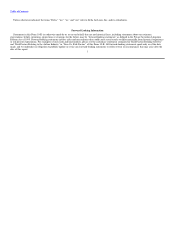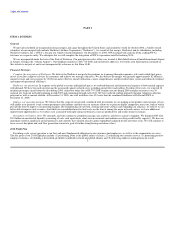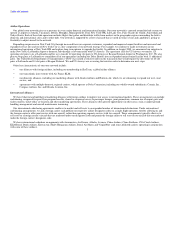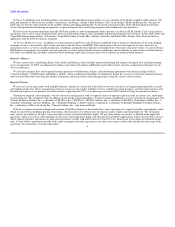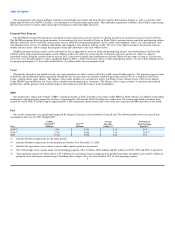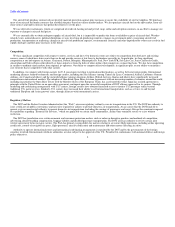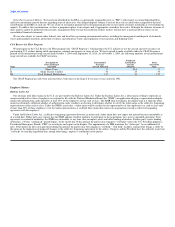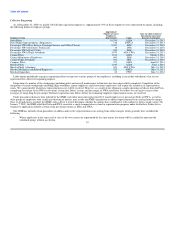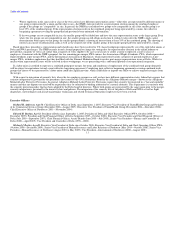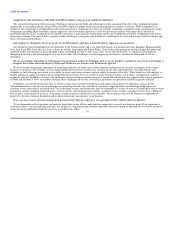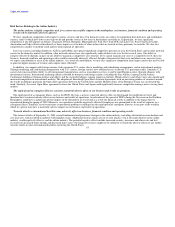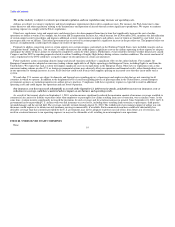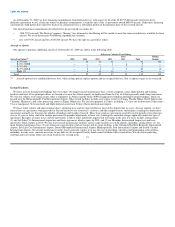Delta Airlines 2009 Annual Report Download - page 16
Download and view the complete annual report
Please find page 16 of the 2009 Delta Airlines annual report below. You can navigate through the pages in the report by either clicking on the pages listed below, or by using the keyword search tool below to find specific information within the annual report.
Table of Contents
• Where employees in the same craft or class at the two carriers have different representation status—either they are represented by different unions or
one group is represented by a union and the other is not—the NMB's rules provide for a representation election among the combined employee
groups if the groups are "comparable" in size. In general, the NMB has considered two groups to be comparable in size if the smaller group is at
least 35% of the combined group. If the representation election results in the combined group not being represented by a union, the collective
bargaining agreement covering the group that had previously been unionized will terminate.
• If the two groups are not comparable in size, the smaller group will be folded into and have the same representation status as the larger group. Even
where the two groups are not comparable in size, the smaller group can still obtain an election if, within 14 days after the NMB's single carrier
determination with respect to that group, the smaller group submits a showing of interest from at least 35% of the combined group. The showing of
interest can consist of authorization cards as well as the seniority list of the smaller group, if the smaller group had been represented by a union.
Based upon these procedures, representation and related issues have been resolved in U.S.-based workgroups represented by six of the eight labor unions at
Delta and NWA pre-merger. The NMB recently issued a formal proposal to change the voting rules for representation elections in the airline industry to
provide that a majority of votes cast (rather than a majority of votes eligible to be cast) is necessary to certify a union to represent a craft or class of
employees. Concurrent with the NMB's proposal, the two remaining pre-merger NWA unions, the Association of Flight Attendants-CWA, which represented
flight attendants at pre-merger NWA, and the International Association of Machinists, which represented various categories of ground employees at pre-
merger NWA, withdrew applications that they had filed with the National Mediation Board to resolve post-merger representation issues at Delta. While it is
unclear when representation issues will be resolved in those workgroups, we are proceeding with a substantial portion of our operational integration.
If a labor union is certified to represent a combined group post-merger, the terms and conditions of employment of the combined work group ultimately
will be subject to negotiations toward a joint collective bargaining agreement. Completing joint collective bargaining agreements covering combined work
groups that choose to be represented by a labor union could take significant time, which could delay or impede our ability to achieve targeted synergies from
the merger.
With respect to integration of seniority lists, where the two employee groups in a craft or class have different representation status, federal law requires that
seniority integration be governed by the procedures first issued by the Civil Aeronautics Board in the Allegheny-Mohawk merger—known as the Allegheny-
Mohawk Labor Protective Provisions. In general, Allegheny-Mohawk Labor Protective Provisions require that seniority be integrated in a "fair and equitable"
manner and that any disputes not resolved by negotiations may be submitted to binding arbitration by a neutral arbitrator. This requirement is consistent with
the seniority protection policy that has been adopted by the Delta board of directors. Where both groups are represented by the same union prior to the merger,
seniority integration is governed by the union's bylaws and policies. The integration of the seniority lists of the pilots of Delta and NWA as well as flight
dispatchers, meteorologists and aircraft maintenance technicians and related Technical Operations employees have been resolved.
Executive Officers
Richard H. Anderson, Age 54: Chief Executive Officer of Delta since September 1, 2007; Executive Vice President of UnitedHealth Group and President
of its Commercial Services Group (December 2006—August 2007); Executive Vice President of UnitedHealth Group (November 2004—December 2006);
Chief Executive Officer of Northwest (2001—November 2004).
Edward H. Bastian, Age 52: President of Delta since September 1, 2007; President of Delta and Chief Executive Officer NWA (October 2008—
December 2009); President and Chief Financial Officer of Delta (September 2007—October 2008); Executive Vice President and Chief Financial Officer of
Delta (July 2005—September 2007); Chief Financial Officer, Acuity Brands (June 2005—July 2005); Senior Vice President—Finance and Controller of
Delta (2000—April 2005); Vice President and Controller of Delta (1998—2000).
Michael J. Becker, Age 48: Executive Vice President of Delta since October 2008; Executive Vice President of Delta and Chief Operating Officer NWA
(October 2008—December 2009); Senior Vice President of Human Resources and Labor Relations of Northwest (May 2005—October 2008); Senior Vice
President—Human Resources of Northwest (August 2001 to May 2005); Vice President—International of Northwest (2000—August 2001).
11


